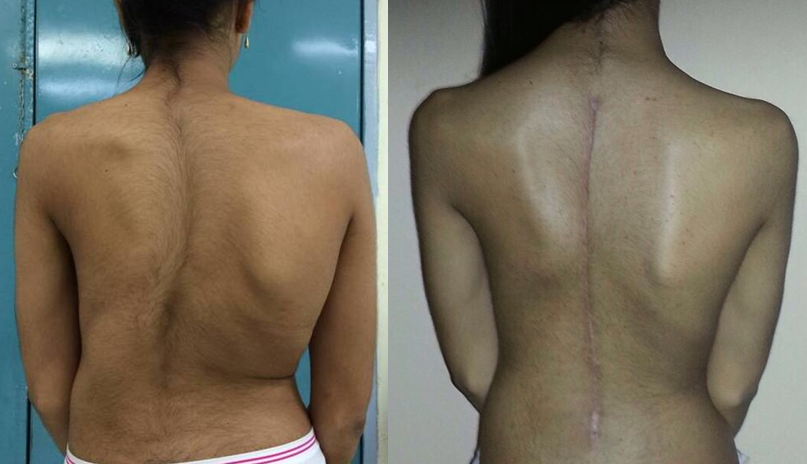Scoliosis is a condition which causes a sideways curve in the spine. Usually, the curve is either "C" or "S" shaped. Some patients may be able to maintain a stable degree of curve. However, others may fail and the curve increases over a passage of time.
Mild scoliosis is harmless. It usually does not cause problems. One the other hand, severe cases may affect with breathing. In the even where scoliosis gets worse and patients do not get relief with bracing, surgery may be an option for treatment.
There are three goals of performing Scoliosis Surgery:
1. End the Progression of Curve – A scoliosis surgery is required because the deformity continues to worsen. Hence, a surgical procedure should at least be effective enough to prevent the curve from getting worse.
2. Minimize Deformity – The surgery for scoliosis may de-rotate abnormal twisting of the spine. This will depend on the amount of flexibility the spine. It will also rectify the lateral curve by around 50% -70%. The change will help the patient stand up straighter. A significant reduction can also be seen in the rib hump of the back.
3. Retain Trunk Balance – The surgeon may consider trunk balance for variations in the position of the spine. This means the surgeon will try and maintain natural front and back curvature as far as possible. The legs and hips will also be kept even.
In some cases, spinal adjustment may also be considered. As per the standard rule, overall health of spinal cord should be monitored during the course of surgery.
Surgical Options
Usually there are three main types of scoliosis surgery:
Fusion – This is a spinal surgery that permanently fuses two or more neighboring vertebrae to allow them grow together at the joint of spine. This will form a solid bone which does not move anymore. Spinal fusion surgery has become advanced and result oriented with modern instrumentation and approaches such as screws, rods, hooks, and/or wires. These are placed on the spine to help surgeries attain better curvature. The patient can expect faster recovery times as compared to the past.
One of the major advantages of spinal fusion surgery is its long-term safety record. It also ensures efficacy for the treatment of scoliosis.
Bone Grafts – The process involves connecting two or more spinal bones (vertebrae) with new bone grafts. In some cases, hooks, metal rods, screws, or even wires may be used to hold a specific part of the spine straight until the bone heals.
Intensive Care - The surgery lasts for around 4-8 hours. Once the surgery is successfully accomplished, the patient is transferred to the ICU (intensive care unit). Here, the patient is given intravenous fluid and treatment for pain relief. Normally, the patient can leave ICU within a day (24 hours). In some cases, they may require staying in hospital for at least 7-10 days.
Recovery – Patients can join work within 4-6 weeks. Activities such as sports may require at least one year after surgery. Some patients may even require wearing a back brace to support the spine for around six months.
Patients would require visiting the hospital in every 6 months. This is to get the rods lengthened. It is an outpatient process. Hence, the patient does not require spending the night. Once the spine has grown, the rods can be removed surgically.







0 Comments